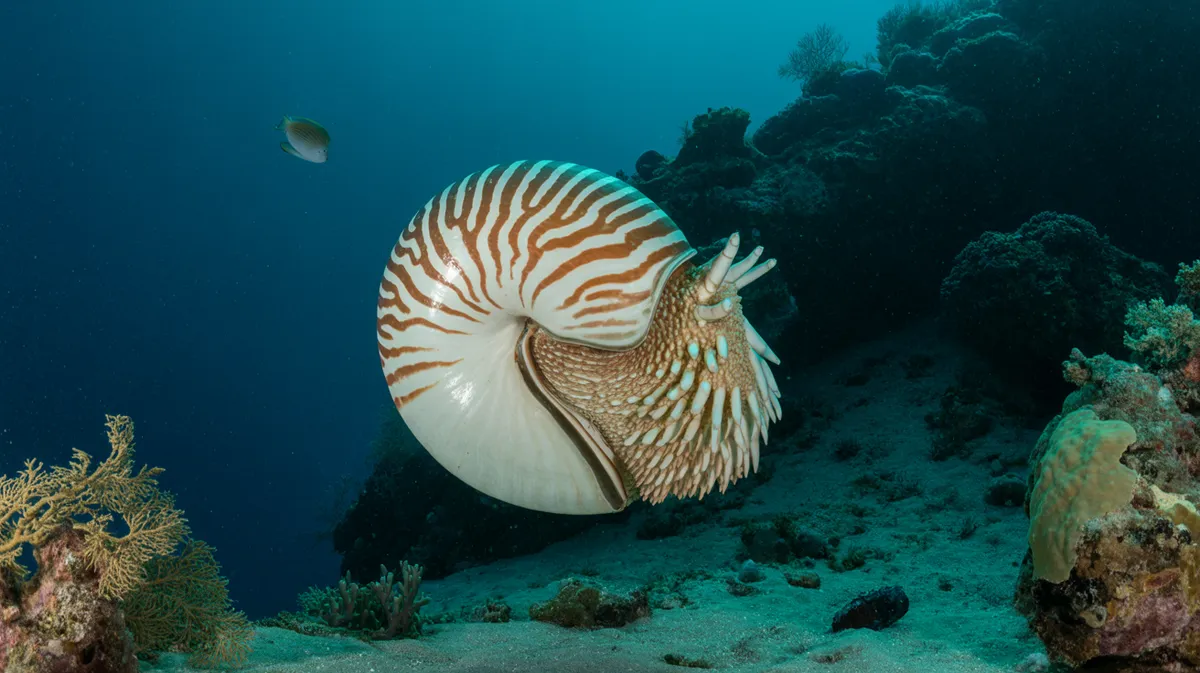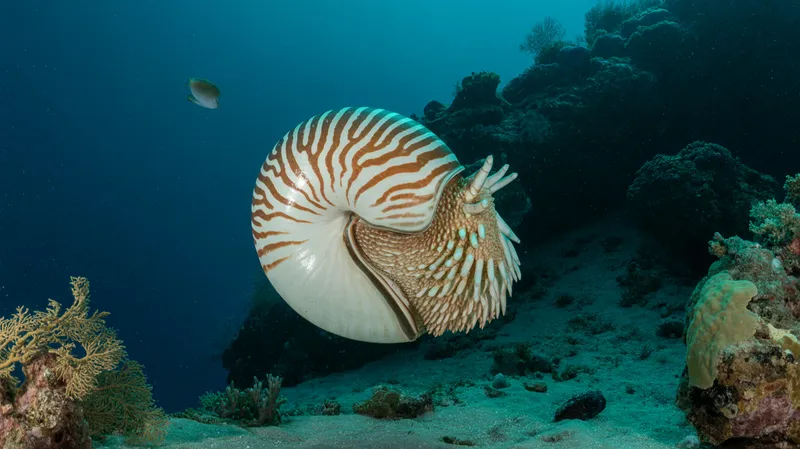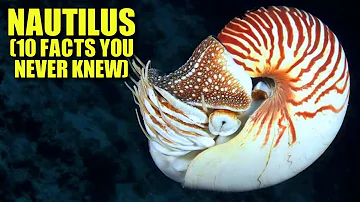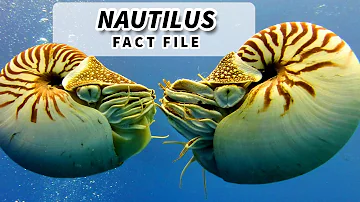
Pearly Nautilus
Nautilus pompilius

Meet the Pearly Nautilus
The pearly nautilus is a distinctive marine mollusk known for its beautifully spiraled, chambered shell with a pearlescent inner layer. This ancient cephalopod inhabits the deep slopes of coral reefs in the Indo-Pacific region. Unlike its octopus and squid relatives, the pearly nautilus has numerous small tentacles and lacks ink sacs. It uses jet propulsion to move through the water and relies on its buoyant shell to maintain position at various ocean depths.
Classification
Invertebrate
Habitat
Coral reef slopes and deep ocean waters
Diet
Carnivore
Lifespan
15-20 years
Conservation
Near Threatened
Weight
0.5-2.5 kg
📖Fascinating Facts
Chambered Shell
The nautilus shell is divided into multiple chambers, which the animal uses for buoyancy control by filling them with gas or liquid.
Ancient Cephalopod
Nautiluses are among the oldest living cephalopods, with fossil records dating back over 500 million years.
Deep-Diving Lifestyle
Pearly nautiluses can inhabit depths from 100 to over 700 meters, but they typically ascend to shallower waters at night to feed.
📋Detailed Description
The Pearly Nautilus (Nautilus pompilius) is a remarkable cephalopod mollusk, easily recognized by its coiled, multi-chambered shell that can reach up to 25 cm (10 inches) in diameter. The shell is composed of aragonite and features a striking white and brown striped exterior, with a lustrous, iridescent nacreous (pearly) inner layer. Unlike other cephalopods, the nautilus possesses up to 90 slender, retractable tentacles that lack suckers but are covered in adhesive ridges for grasping prey. Its eyes are relatively simple, lacking a lens, and function more like a pinhole camera, providing basic image detection. The animal's soft body resides in the outermost chamber, while the inner chambers are filled with gas and fluid, allowing for precise buoyancy control via a structure called the siphuncle. Nautilus pompilius is primarily nocturnal, spending daylight hours at depths of 200–700 meters and ascending to shallower waters (100–300 meters) at night to forage. It is a slow-growing, long-lived species, with individuals estimated to live up to 20 years or more. The nautilus has a simple nervous system and lacks the complex behaviors seen in other cephalopods, but it exhibits excellent chemosensory abilities for detecting food and mates. Its evolutionary lineage dates back over 500 million years, making it a living fossil and one of the most primitive extant cephalopods.
💡 Did you know?
The pearly nautilus can adjust its buoyancy by regulating gas and fluid within its shell chambers, allowing it to move up and down the water column with remarkable precision.
🔬Research & Sources
🎭Behavior & Social Structure
Pearly nautiluses are solitary and largely crepuscular or nocturnal, emerging from deeper waters at dusk to hunt along reef slopes. They use chemoreception to locate carrion or live prey, primarily feeding on crustaceans, small fish, and detritus. Nautiluses employ a slow, deliberate hunting strategy, extending their numerous tentacles to probe crevices and capture food. They move using jet propulsion, expelling water through a funnel-like siphon, but are generally slow and energy-efficient swimmers. Social interactions are minimal outside of mating, and there is no evidence of cooperative behavior. During the day, they retreat to deeper, cooler waters to avoid predators and reduce metabolic rates. Nautiluses are known to exhibit homing behavior, returning to specific reef areas after nightly foraging excursions.
👶Reproduction & Life Cycle
Nautilus pompilius exhibits separate sexes, with males typically distinguished by a modified tentacle called the spadix, used for sperm transfer. Mating occurs seasonally, often triggered by water temperature and lunar cycles, though precise timing varies regionally. Courtship involves the male grasping the female with his tentacles and transferring a spermatophore to her mantle cavity. Females lay large, leathery eggs (up to 30 mm long) individually, attaching them to hard substrates in deep water. Incubation is exceptionally long for a mollusk, lasting 9–12 months, after which miniature, fully formed nautiluses hatch. There is no parental care post-oviposition. Sexual maturity is reached slowly, typically at 12–15 years, and reproductive output is low, with females producing only a few dozen eggs in their lifetime.
🛡️Adaptations & Survival
The nautilus's most significant adaptation is its chambered shell, which provides both protection and buoyancy control. The siphuncle, a specialized tissue running through each shell chamber, regulates gas and fluid exchange, allowing the animal to ascend or descend in the water column with minimal energy expenditure. Its tentacles, lacking suckers but highly adhesive, are adapted for capturing a wide range of prey in complex reef environments. The simple pinhole eyes are well-suited for detecting movement in low-light conditions. Slow metabolism and the ability to withstand high pressures enable survival at great depths. Unlike other cephalopods, the nautilus lacks an ink sac, relying instead on its hard shell and cryptic coloration for defense. Its slow growth and longevity are evolutionary strategies for surviving in stable, resource-scarce deep reef habitats.
📚Research Sources
🎨Cultural Significance
The pearly nautilus has fascinated humans for centuries, symbolizing beauty, mathematical perfection (the logarithmic spiral), and ancient lineage. Its shell has been used in jewelry, ornaments, and as a motif in art and architecture, especially in Asia and Europe. In some cultures, the nautilus shell is considered a symbol of spiritual growth and renewal. Historically, nautilus shells were mounted in silver or gold as drinking vessels or decorative objects in Renaissance Europe. The animal's unique form and evolutionary history have made it a subject of scientific study and popular fascination, featuring in literature and educational materials as a 'living fossil.'
🔬Recent Research & Discoveries
Recent research has focused on nautilus population genetics, revealing significant genetic differentiation between regional populations, which has important implications for conservation management. Studies using remotely operated vehicles (ROVs) and baited traps have improved understanding of nautilus depth distribution, movement patterns, and habitat preferences. Ongoing research is investigating the effects of ocean acidification on shell formation, with early results suggesting potential vulnerability due to reduced aragonite saturation at depth. Advances in imaging have provided new insights into embryonic development and the structure of the siphuncle. There is also active research into the nautilus's primitive nervous system and sensory biology, shedding light on the early evolution of cephalopod intelligence.
🎥Wildlife Videos

Nautilus 🐚 (10 FACTS You NEVER KNEW)
Nautilus (10 FACTS You NEVER KNEW) Be sure to watch our full Nautilus Facts episode to learn more about them: ...
Animal Fact Files

Nautilus Facts: OLDER than DINOSAURS | Animal Fact Files
The nautilus is older than dinosaurs! These animals have been around a long time. The name 'nautilus' means sailor, and, in fact, ...
Animal Fact Files

The Baltic | Survival in a Pristine Ecosystem | Animal documentary
Welcome to "The Baltic | Survival in a Pristine Ecosystem", a captivating wildlife documentary that transports you to the serene yet ...
WILD NATURE - Nature animal documentary

The Dark Ocean - Paper Nautilus - Wildlife Documentary HD
A small little documentary on a very rare species of Octopus, the Paper Nautilus Filmed in Anilao, the Philippines over 2019-2021 ...
Blue Ribbon Dive Resort

The Alien World of Deep Sea Molluscs
Molluscs like cephalopods and gastropods dominate the marine world. Inhabiting nearly every ecosystem from shallow reefs to ...
Natural World Facts

Nautilus | Animated | Wildlife Documentary | Informative #biography#wildbird#seaanimals# Documentary
Nautilus | Animated | Wildlife Documentary | Informative #biography#wildbird#seaanimals# Documentary ...
Animals World.official
🌍Habitat Information
The Pearly Nautilus typically inhabits Coral reef slopes and deep ocean waters environments. Pearly Nautiluss have adapted to their environments with specialized features and behaviors.
Primary Habitat:
Coral reef slopes and deep ocean waters
More detailed habitat information will be available soon.
🛡️Conservation Status
The Pearly Nautilus is currently classified as Near Threatened. Conservation efforts are crucial for preserving this species for future generations.
Common Threats:
- 🏠Habitat loss and fragmentation
- 🌡️Climate change impacts
- 🎯Hunting and poaching
- 🏭Human-wildlife conflict
⚠️Threats & Conservation Challenges
The primary threats to Nautilus pompilius are overfishing for the ornamental shell trade, bycatch in fisheries, and habitat degradation from destructive fishing practices and coral reef decline. Their slow reproductive rate and late maturity make populations particularly vulnerable to exploitation. Recent studies indicate significant population declines in areas with heavy shell collecting, such as the Philippines and Indonesia. Climate change, ocean acidification, and pollution also pose long-term threats by impacting shell formation and reef health. Conservation challenges include limited population data, lack of effective enforcement of trade regulations, and the species' deep-water habitat, which complicates monitoring. The IUCN currently lists the species as Near Threatened, and it is included in CITES Appendix II, restricting international trade.
🔬Scientific Classification
Scientific Name
Nautilus pompilius
Classification Hierarchy
🔍 About Taxonomic Classification
Taxonomic classification is a hierarchical system used by scientists to classify and organize living organisms based on shared characteristics and evolutionary relationships.
The system moves from broad categories (Kingdom) to increasingly specific ones, with each animal's scientific name typically consisting of its Genus and species.
📝Community Notes
Share your observations and insights about the Pearly Nautilus with our community of wildlife enthusiasts.
Join Our Community
Sign in to share your observations and connect with fellow wildlife enthusiasts.
Sign In to ContributeNo community notes yet
Be the first to share your observations about the Pearly Nautilus!
Explore Pearly Nautilus
Select a tab above to learn more about this amazing animal.
📸Photo Gallery
No photos available for this animal yet.
🌟Discover More Wildlife
Continue your journey of discovery with more fascinating animals from our database
